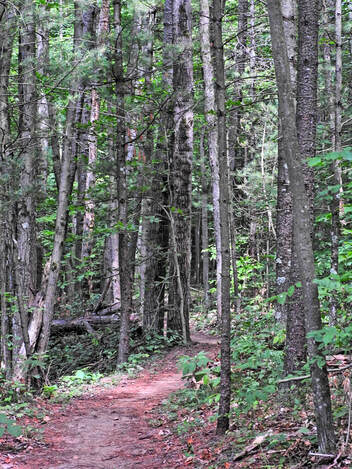 An inviting Michigan trail An inviting Michigan trail Mark your calendars! Next week is Michigan Trails Week, and whether you live in Michigan or not, it’s a fine time to get out for a stroll, a hike, a run, or a bike ride. 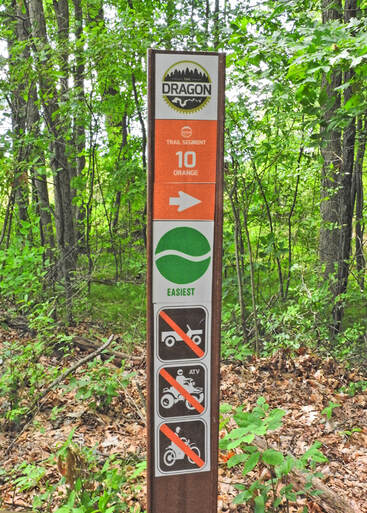 A recently-opened section of the Dragon Trail A recently-opened section of the Dragon Trail In a state with 13,000 miles of state-managed trails, thousands more miles of local, county, and federally managed trails, and more rail-trail miles than any other state in the nation, you might think the addition of one more trail would be no big deal. 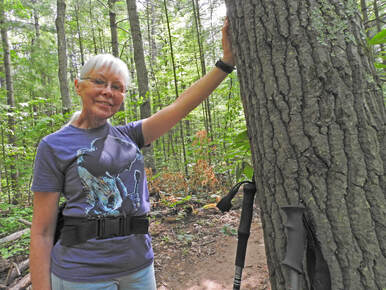 Happy hiker Happy hiker Not so in Newaygo and Mecosta Counties, where the opening of the first segments of the Dragon Trail is creating a buzz. Once complete, the 47-mile loop will encircle 4,000 acres of Hardy Pond, with thirteen scenic overviews. While some portions of the trail are specifically designed for mountain biking, others are wider, with longer sight lines more conducive to both hiking and biking. Ray and I tried out one of the recently-opened segments on a sunny day a few weeks ago. A number of other hikers and cyclists had the same idea, but we found it easy to maneuver around one another, even at social-distancing lengths.  Houseboats at Hardy Dam marina Houseboats at Hardy Dam marina We hiked the section that runs south from Sandy Beach County Park to the Hardy Dam marina, an easy stretch for sauntering or stepping up the pace. 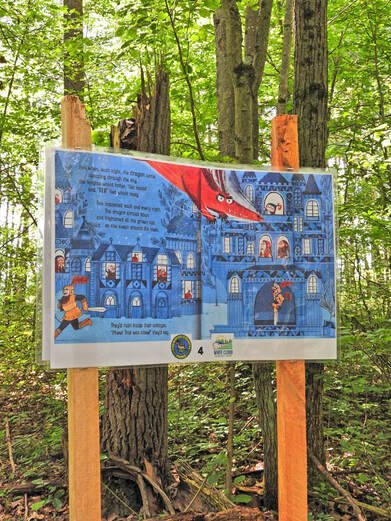 A story stop along the trail A story stop along the trail One delightful feature of that section of trail is a series of postings of laminated pages from a children’s book about a boy and a dragon, The Knight Who Said NO! by Lucy Rowland and Kate Hindley. With or without a youngster in tow, the story is a fun read, and the illustrations enchanting. Plus, if you need to catch your breath, you can always pretend to be stopping just to read the next installment.  It's a fine time for a woodland walk It's a fine time for a woodland walk In honor of Michigan Trails Week, the Department of Natural Resources is sponsoring a challenge. The goal is for Michiganders to collectively log 100,000 miles on state, local, county or federally managed nonmotorized trails between September 20 and 27. There’s no fee to participate, and participants will be entered into a drawing for outdoor gear and Michigan-branded prizes.  And you earn badges! I think they’re virtual, so you probably can’t sew them on your hiking vest, but you can still glory in the achievement. You earn the first badge simply by registering for the event and logging at least one mile. Then you get another badge each time you: Horseback ride for 5 miles Walk, run or hike for 5 miles Bike for 10 miles Paddle for 2 miles For more information on Michigan Trails Week and to sign up for the challenge, visit Michigan.gov/TrailsWeek.
12 Comments
Do you ever have those back-in-school dreams? Like the one where you realize you're late for the final exam in a class you've somehow forgotten to attend for the whole semester? Or the one where you have to make a presentation that you haven't prepared for? And you're inappropriately dressed. Or not dressed at all. Distressing, aren't they? Fortunately, I don't have those dreams so often any more, but I've had them often enough over the years. Between those nightmarish episodes and all the waking-life years I spent in actual classrooms, I have no interest furthering my formal education. So it's kind of funny that one of the things I most looked forward to when I retired was having time to take classes. Not the kind that involve brain-busting study and deadlines, but the fun and enriching kind. 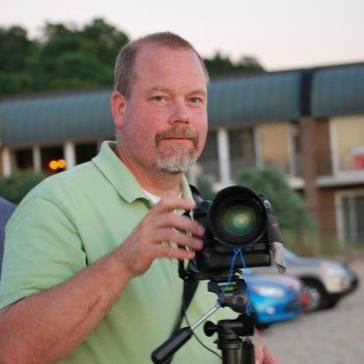 Dave Johnson (Photo: Michael Sievers) Dave Johnson (Photo: Michael Sievers) Recently I took just such a class, and it turned out to be so enjoyable, I may never have another school-days nightmare. The class was a six-week Intermediate Photography course at Artworks in Big Rapids, taught by local photographer Dave Johnson. Dave has been a shutterbug since high school, but got serious about honing his skills over the past ten years. Now he focuses mainly on event, lifestyle, and landscape photography. A proponent of life-long learning, he not only strives to keep improving his skills, but also shares his passion and knowledge with others through classes, photo walks and individual lessons. I was a little nervous about taking the class. For one thing, I wasn't sure how "intermediate" it would be. Though not an absolute beginner, I consider myself a novice. Would I be out of my depth? 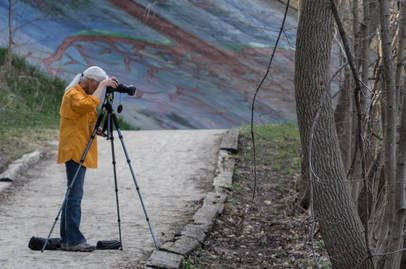 Shooting in class turned out not to be as intimidating as I'd feared (Photo: Dave Johnson) Shooting in class turned out not to be as intimidating as I'd feared (Photo: Dave Johnson) For another thing, I'd been looking for a hands-on class, where we'd spend at least part of the class period actually shooting and getting feedback on our work. But once I found this class, I was anxious about that very aspect of it. I know how I can feel suddenly brainless and blocked in writing workshops where we have to write on the spot. Would I turn photo-blind when it came time to shoot in class?  This shot of a chain-link fence illustrates Dave's approach to looking at the world in unusual ways (Photo: Dave Johnson) This shot of a chain-link fence illustrates Dave's approach to looking at the world in unusual ways (Photo: Dave Johnson) I needn't have worried. Dave's an easygoing instructor who makes the course relaxed and fun, encouraging experimentation and allowing plenty of time for questions. He also shares his approach to photography: trying to look at the world in unique ways, focusing on both the details and the larger scenes they come together to create. When he photographs people, he looks for ways to capture something of their life stories and sources of inspiration. A few more examples of Dave's work: For our first out-of-class assignments, Dave encouraged us to photograph everyday objects we could find around the house. I found eggs . . . and the candle I light every night at dinner time . . . 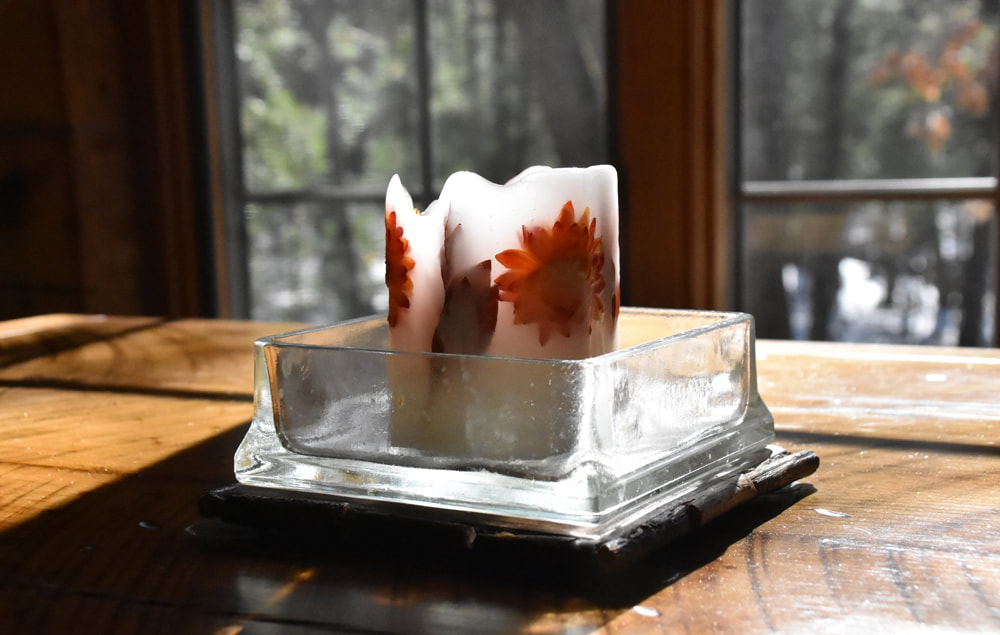 and a still life of kitchen utensils. In class, Dave showed lots of photos to illustrate points he was making. But rather than simply showcasing his best work (and possibly intimidating us in the process), he also showed us some of his less successful photos and engaged us in discussions of what would've made them better. It was a good reminder that learning any skill takes lots and lots of practice and that even accomplished artists have to work at getting everything right. 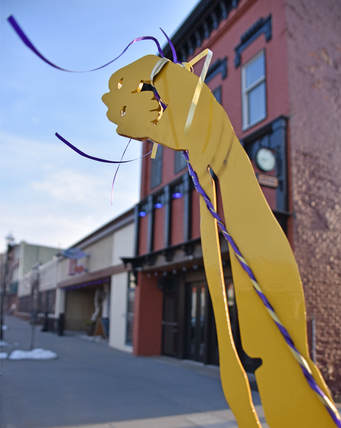 I shot this on a class photo walk in downtown Big Rapids I shot this on a class photo walk in downtown Big Rapids Each class session mixed lecture and discussion on the finer points of exposure, composition, lighting, and specific types of photography—such as landscape, macro photography, and night photography—with breaks to try out techniques we'd just discussed. When the weather cooperated, we took our breaks outdoors. When the weather didn't cooperate, we found things to photograph indoors—either the Artworks exhibits or items Dave brought in: tiny toys for close-up practice, prisms for special effects, and a variety of dollar store light-up doo-dads for a session on playing with light. That one, with the light-up gadgets, was probably my favorite in-class exercise. We experimented with shooting long exposures of ourselves and Dave moving around with glow sticks and strings of lights. It felt like pure play, but we ended up with some pretty cool abstract images. In spite of my early fears, I didn't freeze up when it came time to practice our skills together. I did find group shooting a different experience from roaming around on my own, but it was fun to see what other people were shooting. To promote even more of that kind of exchange, Dave maintains a Facebook group where current and former class members can post photos and comment on photos that other group members post. Busy schedules kept some class members from taking full advantage of this resource, but I appreciated having a place to share work and get feedback. At the end of each class period, Dave issued a challenge for the coming week, such as photographing a fast-moving subject at different shutter speeds, or taking photos at different distances from a given subject. For once, I loved having homework! When I spent an afternoon wandering around with my camera, I wasn't just goofing off, I was working on an assignment. I came away from the class with a fresh set of tips and techniques, but perhaps more important, the inspiration to keep stretching my skills, trying new things, and seeing the world in different ways. Have you taken an enjoyable or challenging class recently? What have you learned? Enjoy a few more of Dave Johnson's photos:
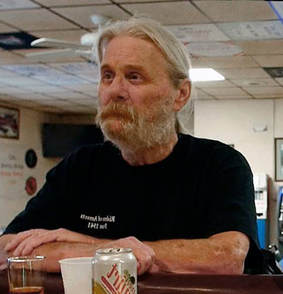 Vietnam veteran Mike O'Connor* Vietnam veteran Mike O'Connor* The bearded man with the gray ponytail sits at a table, alone and looking like he wants to keep it that way. When he speaks, it's to talk about a time in his youth when he decided "I should not befriend new people, because they're likely to die." Even now, he goes on to say, "I still don't get too close to many people." Flash forward to another scene. Same man, same beard and ponytail, tattoos visible on his forearms, but now he's prancing around in a red tutu over striped pants, sporting a red nose, a pink ball cap and an oversized, polka-dot tie and yukking it up with a gaggle of kids and a bunch of other burly guys who are just as outlandishly attired. 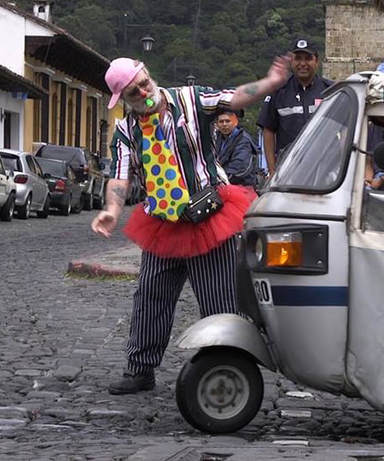 Mike in clown mode* Mike in clown mode* What accounts for the shift between scenes? The man in the red tutu is 71-year-old Vietnam veteran Mike O'Connor, who summoned a different kind of bravery to take part in an experiment in humanitarian clowning, traveling to Guatemala with a group of other veterans to spread smiles in hospitals and orphanages. In the process, he and the other Vets stepped out of the "suffer zone" into a more playful, loving space. Clownvets, a program of physician Patch Adams's Gesundheit! Institute, is the subject of a documentary film-in-progress, and in a bit I'll tell you how you can help the filmmakers finish, distribute and promote the film. 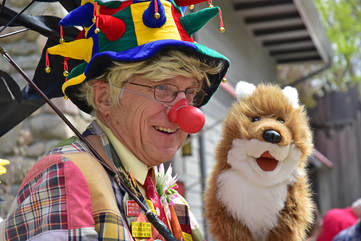 Mark Kane, AKA Marcos the Clown Mark Kane, AKA Marcos the Clown But first, a bit of background. I first heard about the Clownvets project from my neighbor Mark Kane, a licensed psychologist who has seen from his work with veterans how trauma affects the mind, body and spirit. In fact, it was Mark's exposure to Vietnam veterans as a conscientious objector working with the American Friends Service Committee years ago that prompted him to become a psychologist. "Post-traumatic stress, in a variety of names, has been with us since the beginning of time," says Mark. "It's not really a disease like polio is . . . It's normal people reacting normally to very un-normal circumstances." Statistics on the impact of post-traumatic stress disorder (PTSD) are sobering. In the U.S., more than twenty Veterans commit suicide daily. Many more experience physical and psychological symptoms that ripple out to affect their families and communities. As a step toward relieving some of that suffering, Adams and the Gesundheit! Institute came up with the idea of introducing Vets to humanitarian clowning. 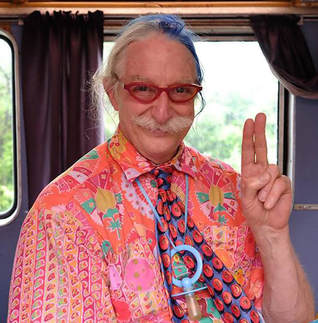 Patch Adams* Patch Adams* Known for his work with warriors experiencing PTSD, Mark was asked to help recruit Vets for the Gesundheit! project. All he knew about Patch Adams at the time was that Robin Williams had depicted him in the eponymous 1998 movie, but Mark quickly learned more about the clowning physician and got onboard with the project. Getting Vets into tutus and rainbow wigs isn't as crazy an idea as it may seem. The nonprofit Gesundheit! Institute bases its holistic brand of medical care on the notion that the health of the individual is closely tied to the health of the family, community, society and world. A leader in the development of therapeutic clowning, Gesundheit! has been sending trained volunteers around the world since 1985 to clown in healthcare settings and distressed communities. They soon learned that it wasn't only the people on the receiving end who benefited from silliness and "spontaneous, interactive play." The clowns themselves—even those who'd started out depressed—came home happy. In 2015, the first cohort of Clownvets traveled to Guatemala, and the experience was transformative. "They saw that they could be part of the solution, instead of causing devastation," says Mark. In the film, several of the Vets, including Mike O'Connor, reflect on the experience. 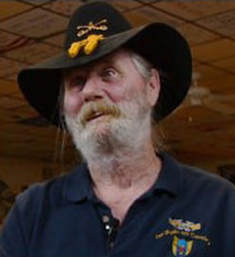 Clowning helped bring Mike out of his shell* Clowning helped bring Mike out of his shell* "I never thought that I would interact with people the way that I did," Mike says. "It's probably a good thing for me, because I do like to isolate, and I couldn't there. It brought me a little bit out of my shell and helped me to interact with people once I got back home." When the first group of Clownvets returned, they helped recruit volunteers for a second trip in 2016. 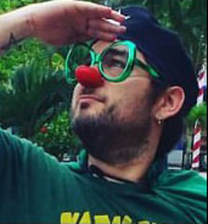 Esteban Rojas* Esteban Rojas* That's when Chilean filmmaker Esteban Rojas, a longtime friend and collaborator of the Gesundheit! Institute, got involved. What Esteban saw "blew his mind," to quote from an online write-up about the project. "Listening to their life stories, hearing the horrors that they went through, but also seeing how their faces changed while trying the clowning, convinced him that this story needed to be told." A month later, Esteban traveled to West Michigan to film Mark and some of the Vets in their daily lives and interview them about their experiences. Mark took on the role of producer and has been working closely with Esteban, co-editor Luis Bahamondes, and executive producers Charlotte Huggins and John Glick on the film, which includes material filmed by a different camera crew on the 2015 Veterans clown trip. Veteran Mike O'Connor has signed on to the film project as a consultant. 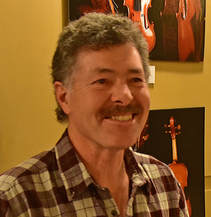 Eldon Howe Eldon Howe Another friend of ours, Eldon Howe, is also involved with the film. In his day job, Eldon is owner of Howe Construction, a company that builds ecology-based, disaster-resistant homes all over the world. But he's also a talented singer-songwriter who expresses himself musically through guitar compositions. Some of his music is included in the film's soundtrack—the perfect accompaniment to footage of our West Michigan environs. I had a chance to view an early version of the film, and to say I was impressed and moved is a huge understatement. Though I had talked with Mark on many occasions about the Clownvets project, I never quite grasped the enormity of its impact until I saw on screen how the Vets and the people with whom they interacted were lifted up through clowning. Wearing silly hats, splashy costumes and of course, red noses, the Clownvets and Gesundheit! staffers gently coax smiles out of children and adults who are living with serious physical and emotional conditions. They hold hands, play with puppets and blow bubbles and kisses. As Mark puts it, "the red nose works as an excuse to connect these men and women with love, compassion, laughter and friendship, things that for these heroes seemed forgotten." "Clownvets" is well on its way to becoming a high-quality, 90-minute feature film, but it has hit a roadblock. Funding has run out, yet there's still more work to be done: filming additional scenes and interviews, finishing the editing, tending to other technical details. That's where you can help. First, view the movie trailer here. Then, please consider making a donation in support of the project. Visit the Gesundheit! Institute's "Donate" page, and under the heading "How would you like to support our work?" select "Support the Veterans Clown Trip Film Project." You're also invited see a preview of the film and meet some Clownvets in person at a "Fun-Raiser" this Friday, November 17, 6-10 p.m., at Ferris State University's University Center, 805 Campus Drive, Big Rapids. Short of cash? Too far from Big Rapids to make the preview? You can still help by spreading the word about this project on social media. The Clownvets will reward you with a slew of heartfelt smiles, and maybe they'll even blow you a kiss. * Photos: Gesundheit! Institute
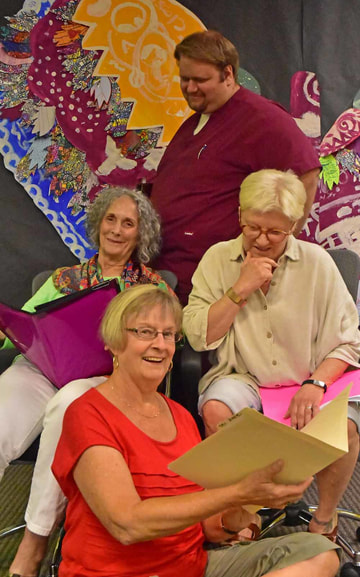 The Artworks Second Monday Writers (minus me). Clockwise from top: Chris, Susan, Sally, Théa The Artworks Second Monday Writers (minus me). Clockwise from top: Chris, Susan, Sally, Théa Night before last, an eclectic group gathered in the basement of Artworks cultural center in Big Rapids. There was Chris, a dental hygienist; Théa, a former social worker; Sally, a retired educator; Susan, an artist who's, well, hard to sum up in a few words; and me. All brought together by our interest in writing—and in improving our writing. Let's listen in on snippets of the evening's discussion: 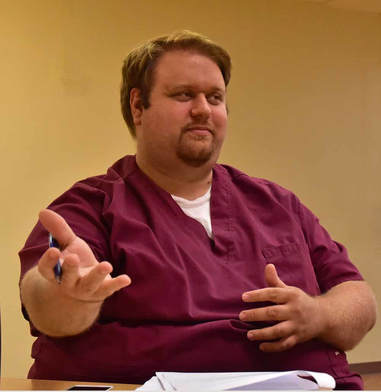 Chris comments on a submission Chris comments on a submission That one suggestion you gave me last time has added two-thousand words to my document! This did read much better for me, and now I have a clearer idea of the story. I'm more pulled in to what's happening. There is a difference between a run-on sentence and a long sentence that moves the story along. I've read 93-word sentences that are absolutely amazing. If you were to break one of those up, it wouldn't work. 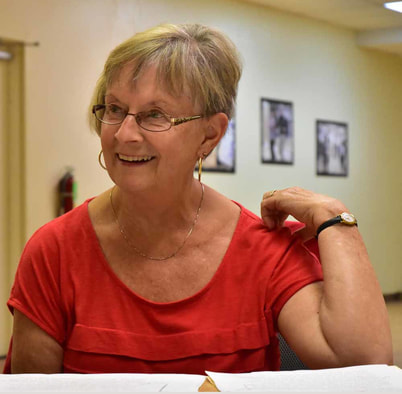 Sally reacts to a comment Sally reacts to a comment I loved the images in your chapter. You create a lot of suspense. Ohhh, so I need to open the chapter with what the hell is going on! I think you're nailing the struggle I've had all along with the voice I want to use to tell the story. I didn't feel like I was reading this just for this group; I was reading because I enjoyed it. 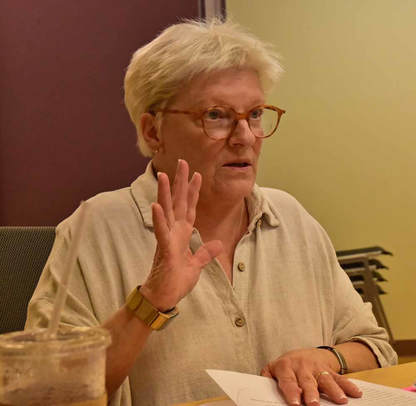 Susan makes a point Susan makes a point In one form or another, the Artworks Second Monday Writers have been carrying on like this for a dozen years. Founded by poet and writer Phillip Sterling, the group originally focused on fiction. Later, under the guidance of writer-photographer-biologist Stephen Ross, and then with writer and all-around lovely person Mikki Garrels at the helm, the group expanded to include writers of both fiction and nonfiction. 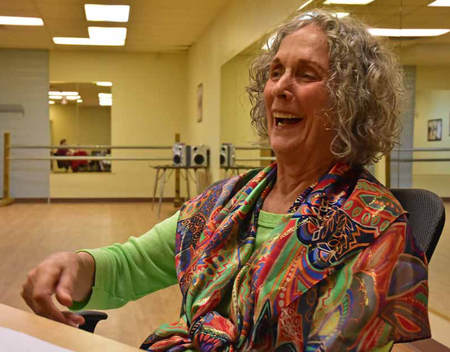 Théa enjoys a light moment Théa enjoys a light moment The group has waxed and waned over the years, with a full house of eleven members around the time I joined in 2012. Eleven writers, all submitting work for review and offering critiques of everyone else's work, eventually got out of hand. No matter how we tried to keep our comments concise, our meetings ran l-o-o-o-o-o-ong! 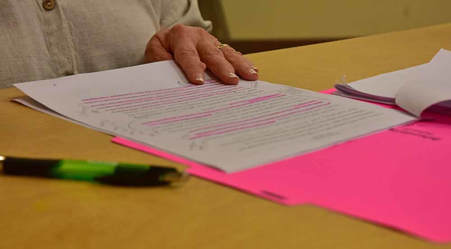 Tools of the trade Tools of the trade Now we're down to a manageable five members. Well, maybe manageable isn't quite the right word—we still get out of hand sometimes. But after working together over the years, we've learned a few things about how to give and take constructive criticism and avoid getting hung up on trivial matters. 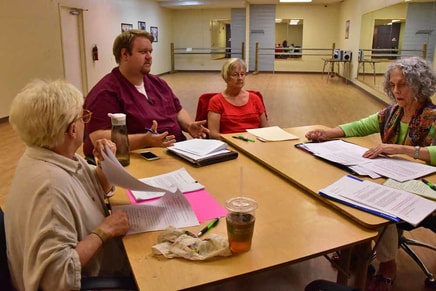 Group dynamics Group dynamics Below, I'll share a few tips for writers' groups, in case you're thinking of starting one of your own (or already belong to one and need suggestions for making it work better). But before that, I want to introduce you to the Second Monday Writers and let them tell you about themselves and their projects. 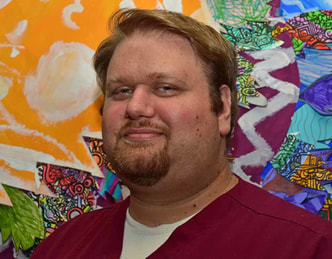 Christopher Rizzo Christopher Rizzo Christopher Rizzo I’m currently working on a horror/supernatural story. It involves Dhampirs hunting old school demonic beings, set in a dystopian future. I've worked in many different genres, including Sci-Fi, fantasy, non-fiction and poetry. At the moment, I work as a dental hygienist in Lakeview Michigan. 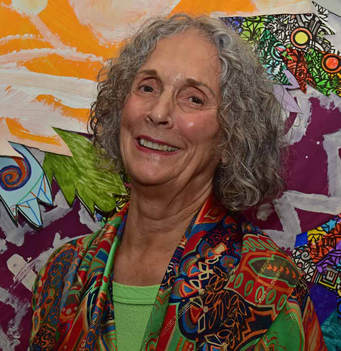 Théa Heying (wearing some of her resale chic) Théa Heying (wearing some of her resale chic) Théa Heying I consider myself a skilled Hunter/Gatherer and resale shopping a blood sport. My work-in-progress, A Wilderness Guide to Resale Chic, is loaded with tips on how to sniff out treasure and navigate unpredictable resale terrain. Its message: You do not have to be born rich, win the lottery, or max out your credit cards to dress well and surround yourself with beautiful things. My background as a Licensed Master Social Worker and Cognitive Therapist informs my approach; having grown up in Michigan’s Upper Peninsula gives me an edge. My adult years in Chicago supply field experience: true tales and insider information. In addition to being a member of the writers group, I contribute to several Michigan newspapers and have been published in Michigan History magazine and Health and Safety magazine. I live on the Muskegon River near Big Rapids. Sally Kane 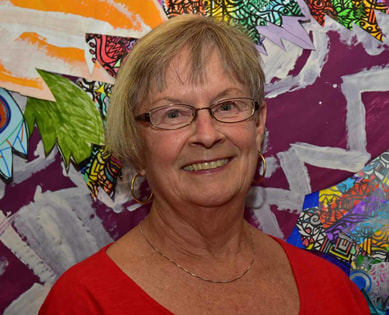 My current writing project is a memoir about visiting Cuba in 1980, during a brief period when the U.S. government allowed some educational travel to that country. The story weaves personal discovery and the effects of growing up white-middle class in the United States during the Cold War and the1960’s, with a de-mystifying of Cuba’s realities at that time. I also write poetry, essays and non-fiction stories. A retired early childhood educator and social worker, I also did Trager Bodywork and taught Movement Therapies for many years. In the mid-1980s, I lived and worked in Mexico and Central America with my husband, where I learned to speak and read some Spanish. In December 2016, I returned to Cuba, a trip that serendipitously coincided with the week of national mourning for Fidel Castro. In addition to writing, my interests are travel and learning about history and culture, reading, drawing and outdoor activities that correlate with the seasons, all balanced with political activism. I delight in caring for and playing with my granddaughter. Editor's note: Sally is also my neighbor and a member of the Monday morning yoga class and the Wander Women hiking group. Susan Stec 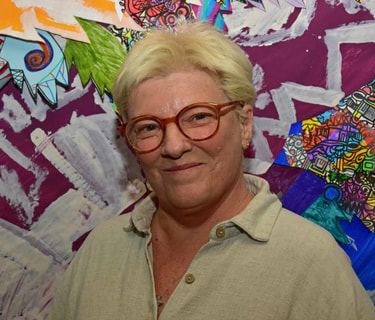 I write paranormal romance/humor, urban fantasy and horror for adults, new adults and young adults. My current project is a young adult urban fantasy that I'm co-authoring with Christopher Rizzo. I will write a seventeen-year-old shapeshifter wolf who does not accept her role in the wolf pack. Christopher is writing an angel with faery blood who was sent to earth to earn his wings by saving the shifter. Where I draw my characters from: I grew up in the streets of Bridgeport Connecticut, and that's where I got my education. By ten years old, I took care of my sister and brother and our four-room apartment while my mother worked two jobs. The city was a melting pot of good and evil, and by ten I knew it well, above and below ground, and was cold to its hardships. In my writing world, I weave reality with mythological creatures, fantasy, folklore, legend, and a fair share of humor, because without humor there is no sanity. What makes me smile: Walking in the woods, rainy days, and listing to the coyote at night. My art—watercolor, acrylics, book-cover and marketing graphics, stained glass. Listening to classic rock and writing. You can find me and my books here: Amazon http://amzn.to/1NjkU6B Facebook https://www.facebook.com/Susan-Stec-113043665460273/ Twitter https://mobile.twitter.com/suesan0814  Marked-up manuscript Marked-up manuscript Pretty interesting mix of people and projects, wouldn't you say? Before I joined this group, I had never read paranormal fiction, fantasy (at least not since childhood fairy tales) or much Sci-Fi. It's been enlightening—and fun—to be exposed to these genres, which are so different from the kind of writing I've done. I've been inspired to try my hand at fiction (not quite as far-out as some I've read in this group, but definitely a stretch from journalism and memoir!). In turn, the fiction writers in the group have offered insights on ways to enliven my writing. Things don't always run smoothly—what ever does when you get a roomful of distinct personalities? But we keep learning from one another, and our writing keeps growing as a result. Now, as promised, a few tips for writers groups:
Thanks to Mikki Garrels for filling me in on the early years of the Artworks Second Monday Writers.
With this week's post, I'm introducing a new feature called Last Wednesday Wisdom. On the last Wednesday of every month, I'll serve up a potpourri of advice, inspiration and other tidbits I've come across in recent weeks. This installment comes with a bonus: If you read all the way to the end, you'll get a sneak peek at a few more fairy houses created for the Camp Newaygo Enchanted Forest event, plus another surprise photo. So read on (and no fair jumping to the end to see the pictures first!). Creativity is merely a plus name for regular activity. Any activity becomes creative when the doer cares about doing it right, or better. -- John Updike When words become unclear, I shall focus with photographs. When images become inadequate, I shall be content with silence. -- Ansel Adams Even work you consider to be your worst is good for something. Every effort teaches you about your desires and tendencies, or guides you toward some new possibility, or shuts the door on an avenue you mistakenly thought was the right one. -- Novelist Téa Obreht, quoted in The Writer magazine The women whom I love and admire for their strength and grace did not get that way because sh*t worked out. They got that way because sh*t went wrong, and they handled it. They handled it in a thousand different ways on a thousand different days, but they handled it. Those women are my superheroes. -- Elizabeth Gilbert Faith is taking the first step, even when you don’t see the whole staircase. -- Martin Luther King You can cut all the flowers but you cannot keep spring from coming. -- Pablo Neruda Are you ready for your treat now? Me, too! But before the fairy house preview, here's a new creative challenge. Ray made up a fairy tale to go with his fairy house. Can you come up with one for your own or someone else's fairy house? (If you missed the earlier preview, find more inspiration here.) Now take a look at these creations by "Sylvan Sally" Kane, "Elfin Eileen" Kent, "Diaphanous Diane" Sack, "Linda of Lilliput" Cudworth, "Spritely Sue" Schneider and her granddaughter "Artsy Ayla": SYLVAN SALLY ELFIN EILEEN DIAPHANOUS DIANE LINDA OF LILLIPUT SPRITELY SUE AND AIRY AYLA And finally, in response to last week's post on serendipity, Cindi McDonald of San Antonio sent this: I have no story, but I do have a pic. Thanks, Cindi, fairy house builders, contributors of wisdom. . . and readers! Have you come up with any fairy stories or do you have discoveries from the past month to share? 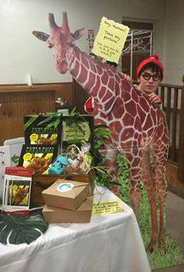 I found Waldo at Authorpalooza! I found Waldo at Authorpalooza! Sherlock Holmes gave me a cunning look (you can't put anything over on that guy); Tinkerbell sidled past me, angling her wings so as not to poke me in the eye; and I found Waldo—he was behind the giraffe. No, I wasn't on a flight of fantasy, I was at Authorpalooza, a showcase for local, regional (and beyond) authors in nearby Big Rapids. The event was part of Festival of the Arts, a month-long, annual celebration that offers an eclectic mix of performances, participatory projects and workshops—from welding to cupcake decorating, from Shakespeare to stand-up comedy, and a whole lot in between. 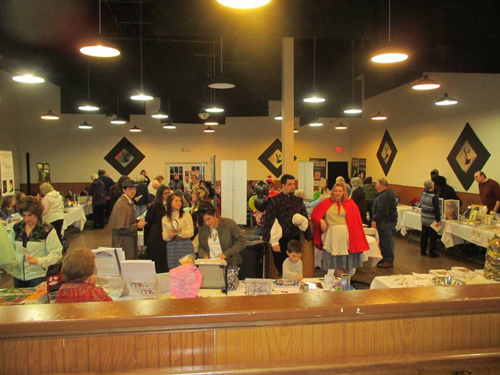 Sherlock Holmes, Little Red Riding Hood and other characters mingle with book lovers. Sherlock Holmes, Little Red Riding Hood and other characters mingle with book lovers. As Alice Bandstra, president of the Mecosta County nonprofit arts organization Artworks, describes it: "We build community and memories through the Festival, while we are expressing our creativity and having fun." That's exactly the point of Authorpalooza: creativity, community and fun. It's a chance for authors to meet and learn from one another and for readers to connect with writers and even rub elbows (or wing tips) with characters from favorite books. The costumed characters, new to the festival this year, were members of the Ferris State University honorary theatre fraternity, and let me tell you, they were convincing. I followed Little Red Riding Hood around for half an hour, hoping she'd mistake me for Grandma and share some goodies. 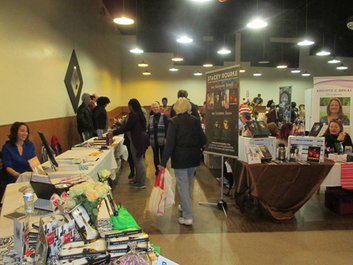 The real reason I was there, though, was to support my author friends, discover new authors and—let's face it—feed my dream of someday being one of those published authors with a table full of books to sign. 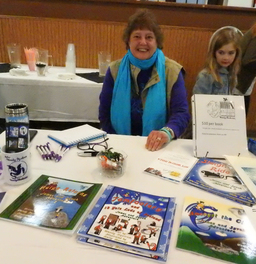 Wendy Nystrom, children's book author Wendy Nystrom, children's book author I started at the table of Wendy Nystrom, a children's book author who spent two years in Iceland, where her fantasy stories are set. I met Wendy through Second Monday Writers Group, which meets monthly at Artworks, and I admire her imagination and energy. Much of that energy has gone into organizing or co-organizing Authorpalooza events for the past three years. The book fair started as a project of the Friends of Big Rapids Community Library, featuring twenty-five authors, and grew from there. This year's event, the first to be part of Festival of the Arts, was held in space donated by The Gate Entertainment Center. If you think an entertainment megaplex with an 18-lane bowling center, game arcade and sports bar is an unusual venue for a book fair, you're not the only one. I wondered about the fit myself. But Authorpalooza was set up in a quiet, corner room that felt worlds away from the crash of bowling pins. Wendy recruited authors through a writing events page she administers on Facebook. "I could have had fifty or sixty, but I only had space for forty," she told me. (Click here for a list of this year's Authorpalooza authors.) 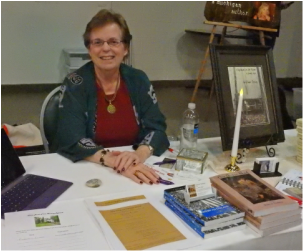 Author Betty Stolarek, who writes fiction as Rebecca Thaddeus Author Betty Stolarek, who writes fiction as Rebecca Thaddeus One of those authors was Big Rapids author Betty Stolarek, who writes fiction as Rebecca Thaddeus. Betty recently retired from a thirty-eight year career teaching writing, and now she and Phillip Sterling, a poet and writer of fiction and nonfiction, offer writing retreats at Three Ponds Farm, Betty's roomy and writing-friendly home on twenty acres on the outskirts of Big Rapids. I've attended two of those retreats and come away each time with fresh insights into my work and writing in general.  Three Ponds Farm Three Ponds Farm When we chatted at Authorpalooza, Betty filled me in on plans for the next workshop and shared the exciting news that her novel One Amber Bead, a family saga that takes place in Poland and the United States, is being translated into Polish. 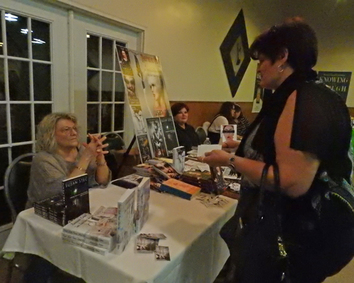 Newaygo County Author Susan Stec enjoys meeting readers and other writers Newaygo County Author Susan Stec enjoys meeting readers and other writers Next, I stopped to talk with Susan Stec, a head-spinningly prolific author of paranormal fiction and another Second Monday Writers friend. Susan, who lives with her "perfectly normal" husband and three "also normal" King Charles spaniels on 50 acres of woods, fields and streams in Newaygo County, describes herself this way on her website: I've always been weird, even as a child—might've been influenced by all those fairies and trolls living around Grandma's house. Could've been because my mother had dreams that came true, and Grandma read tarot cards. I don't know, but I don't think it's because I'm two different people (my family loves them both) and one of us talks to ghosts. Yeah. That's Susan, all right. But there's nothing weird about her reasons for participating in Authorpalooza. "At every signing event I have participated in, there is at least one young writer who wants to know how I got where I am. I love sharing this knowledge and giving encouragement to others, hoping they develop an uncontrollable passion for building their own worlds to share with others," she says. One budding writer in particular caught Wendy's attention this year. "This teenage boy came all the way from Hastings with his grandma. He spent two hours walking around and talking to every author, and he had a folder and took notes." 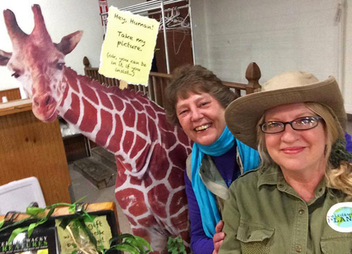 Wendy with K.B. Carr (and friend) Wendy with K.B. Carr (and friend) Wendy, Susan and Betty also get a kick out of meeting their readers face to face, exchanging tips with other authors and raising the visibility of writing within the community. "I've always thought that reading and writing were collaborative functions," says Betty. "From other authors I've gotten ideas on marketing and spreading the word about my writing. I also use opportunities like Authorpalooza to market my writers' retreats, so that's a way to inspire others." 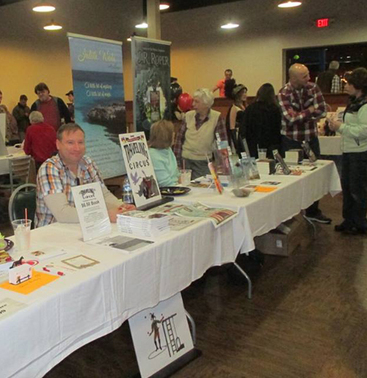 I think what they're all saying is, there's always more to learn, there's always someone you can learn from, and there's always someone who can learn from you. I'm sure that's as true in other endeavors as it is in writing. How does your community encourage interactions among people who are passionate about the arts? |
Written from the heart,
from the heart of the woods Read the introduction to HeartWood here.
Available now!Author
Nan Sanders Pokerwinski, a former journalist, writes memoir and personal essays, makes collages and likes to play outside. She lives in West Michigan with her husband, Ray. Archives
April 2022
Categories
All
|
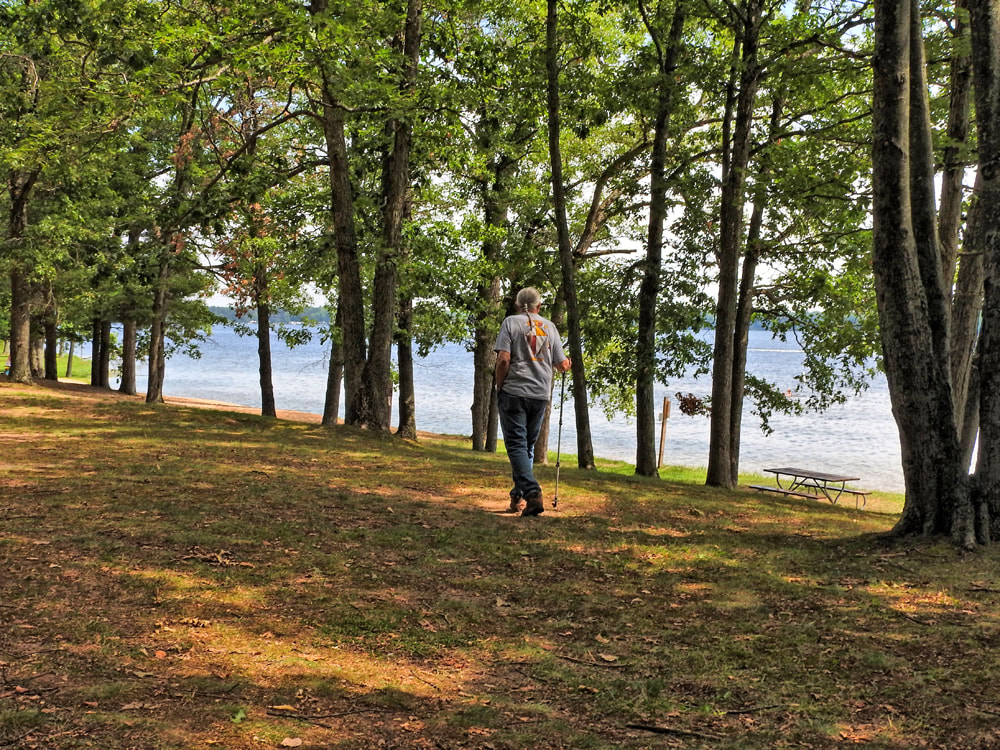


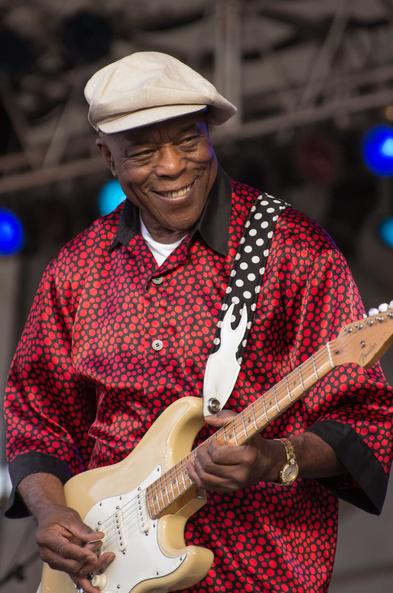

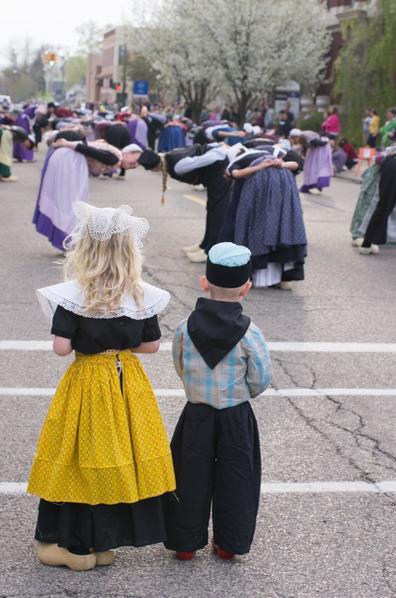
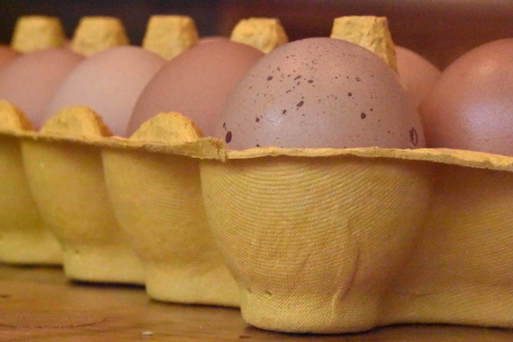

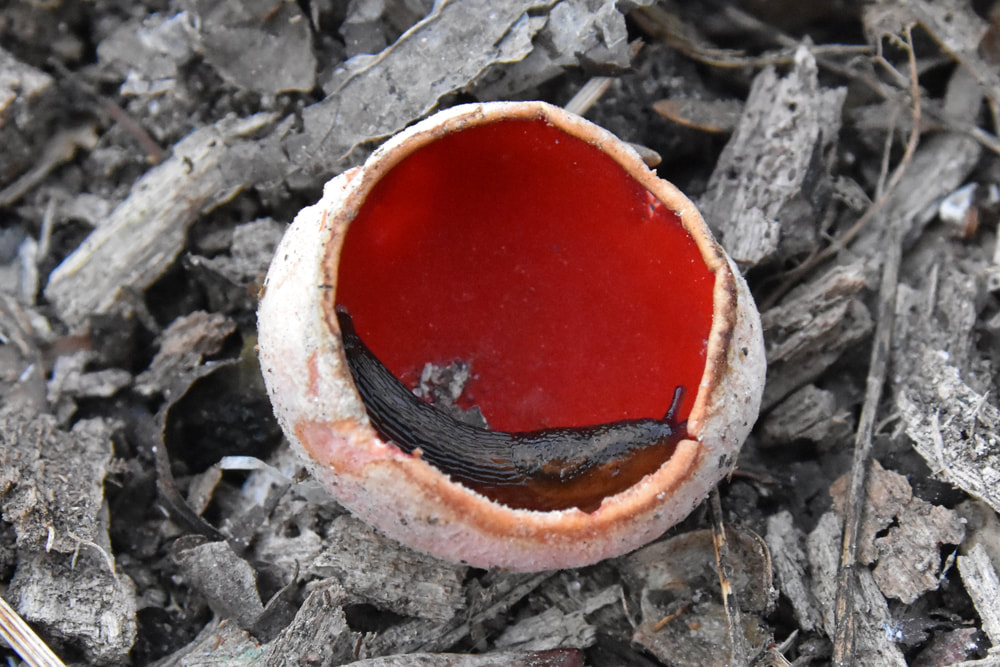
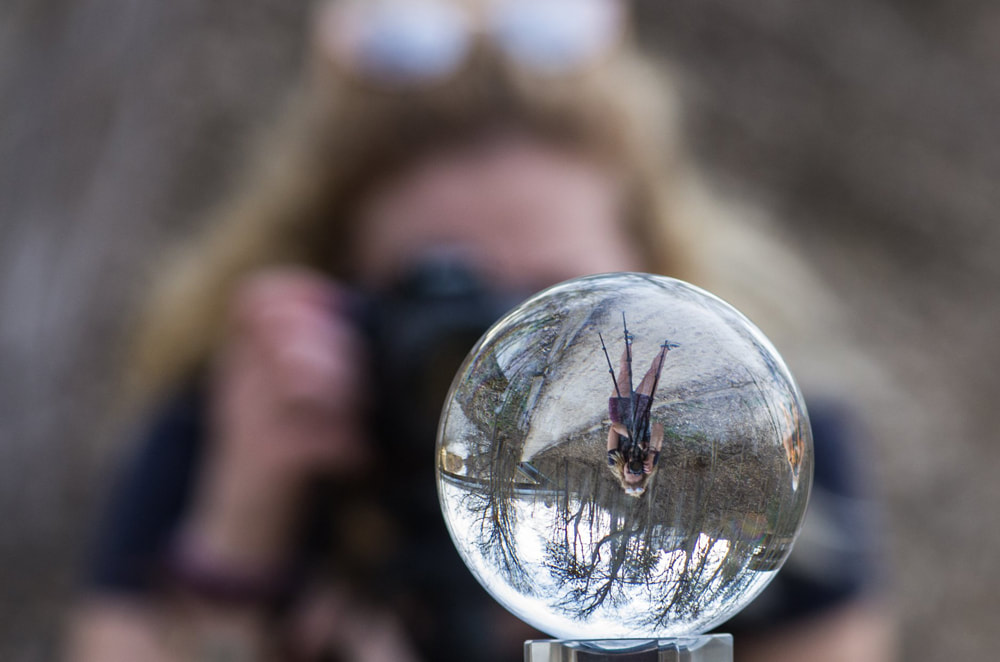

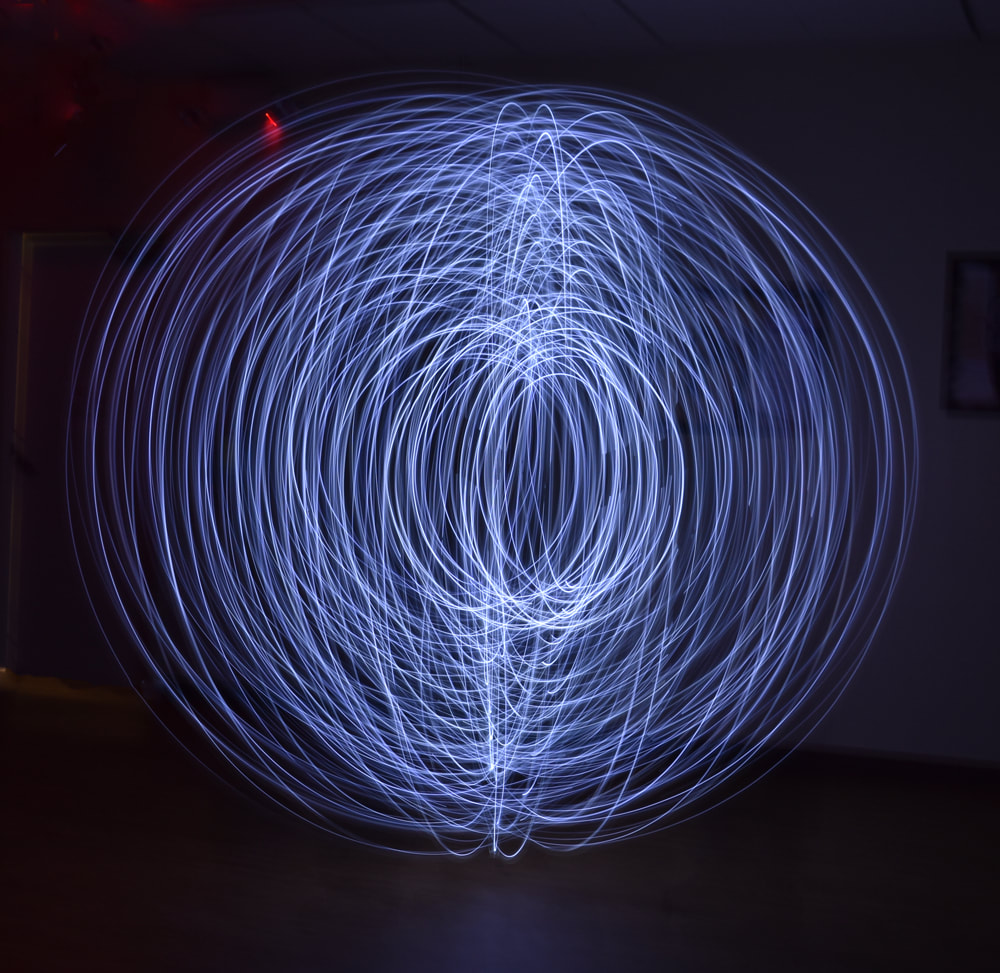



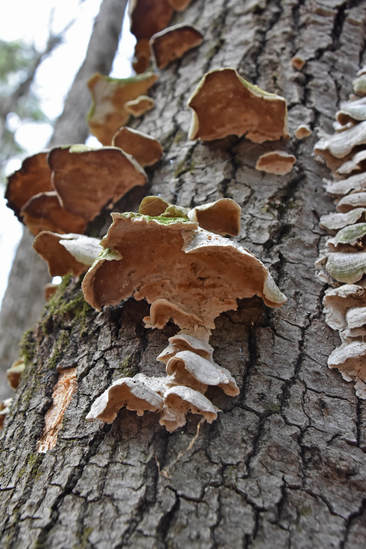



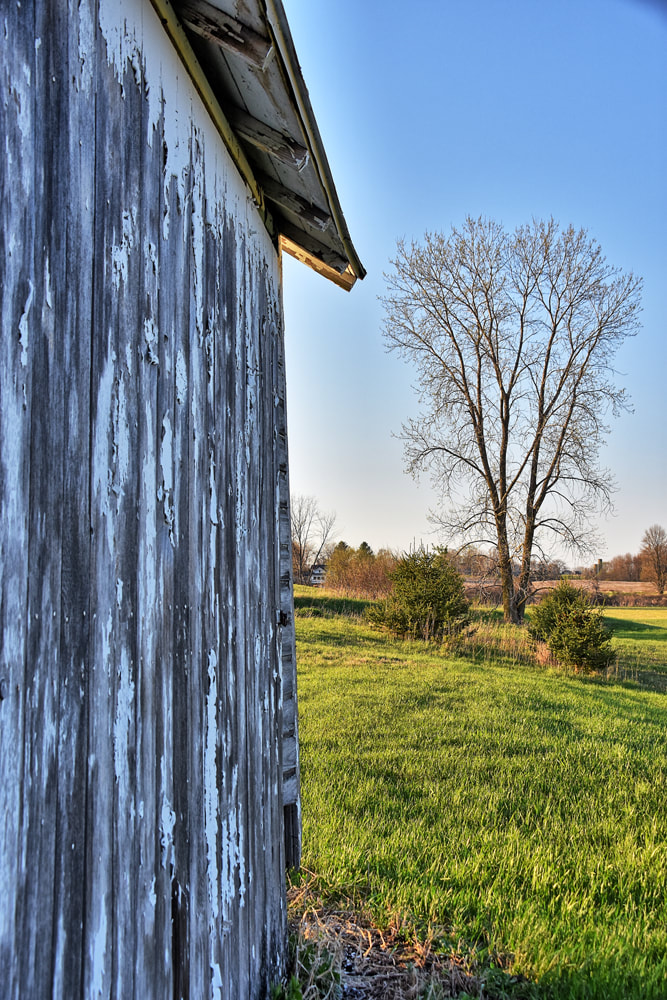


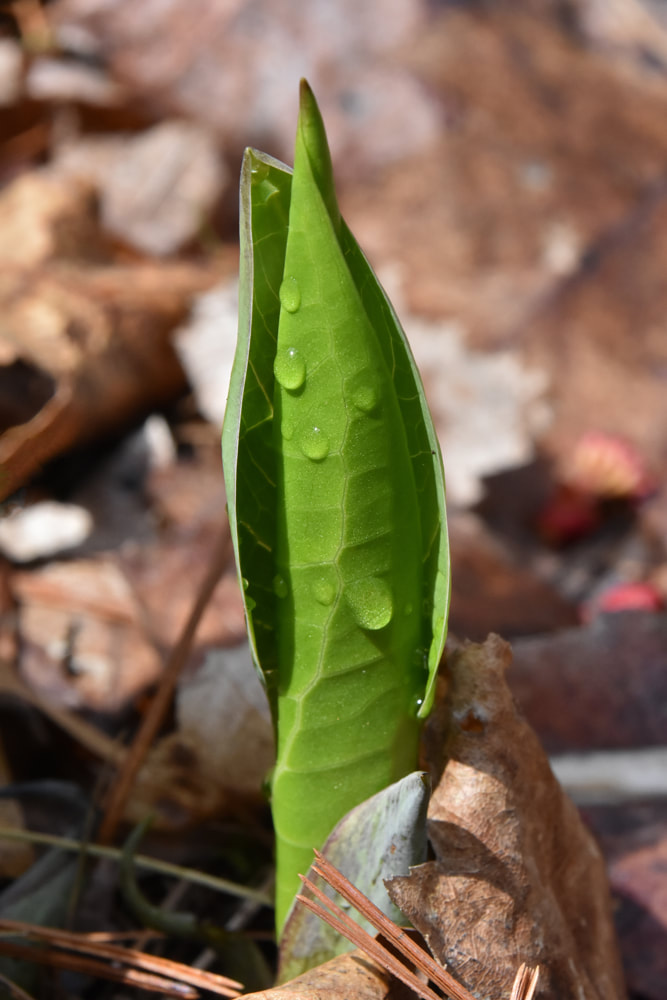


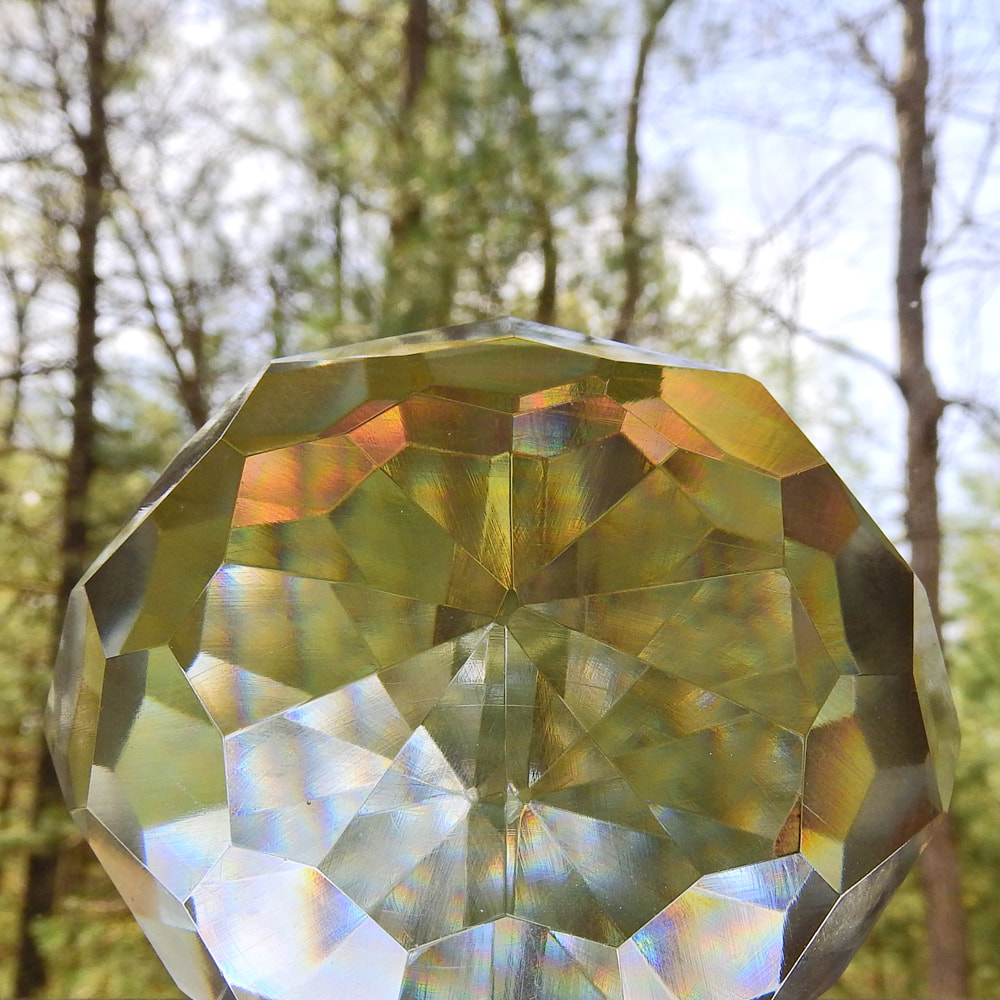
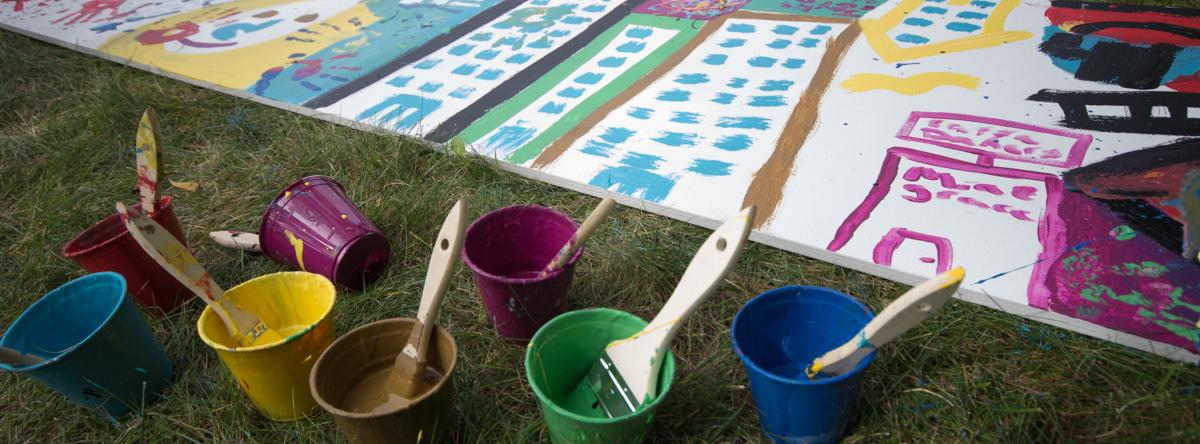
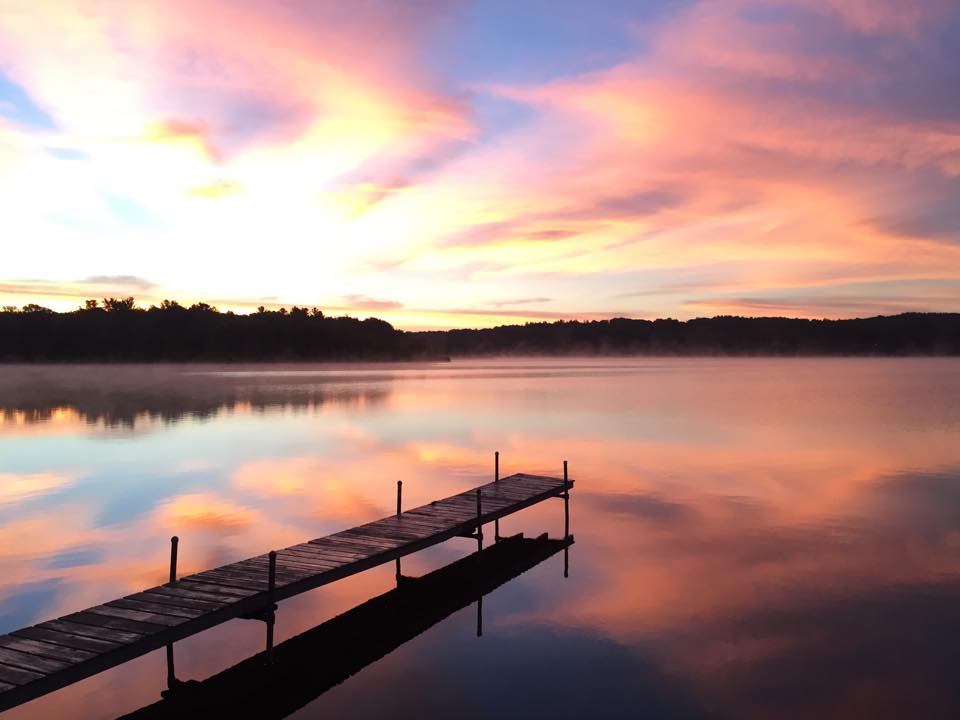

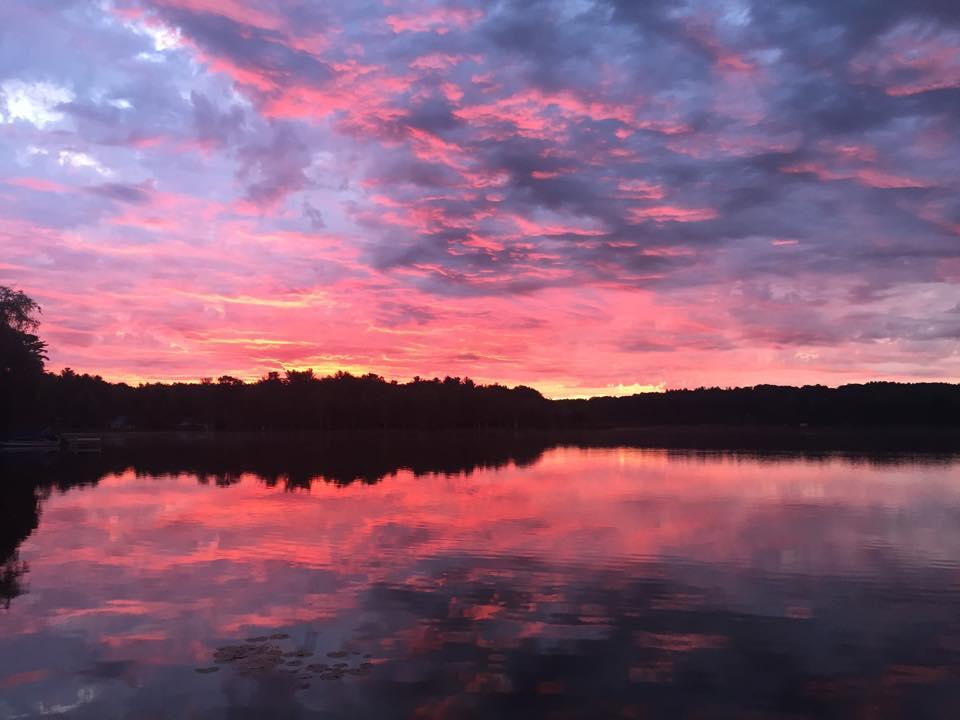

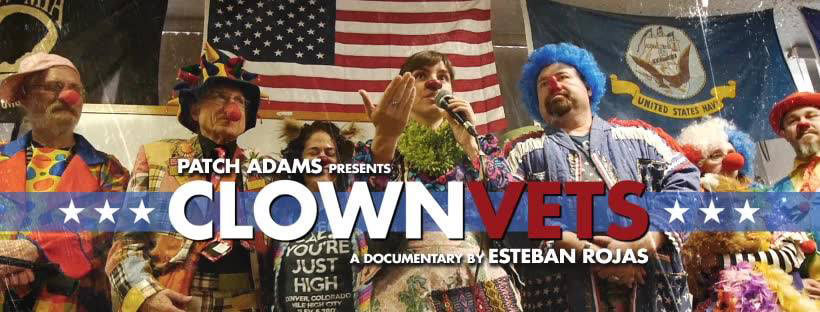
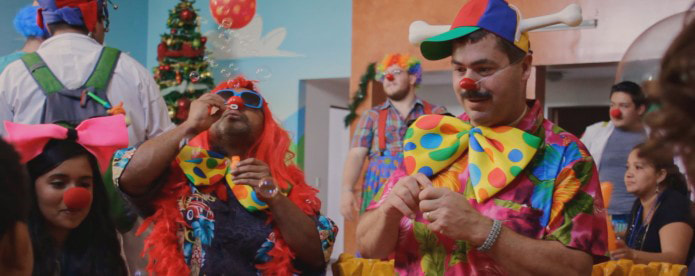
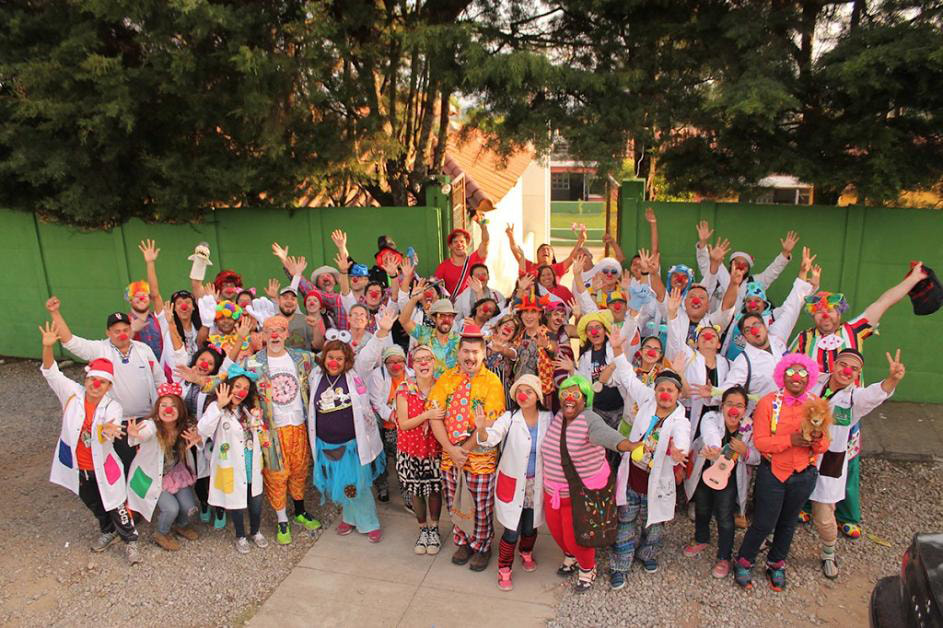
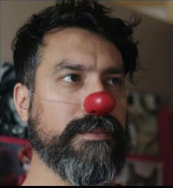
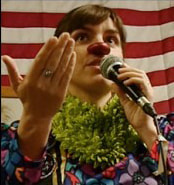
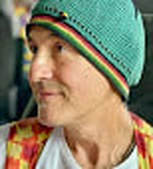
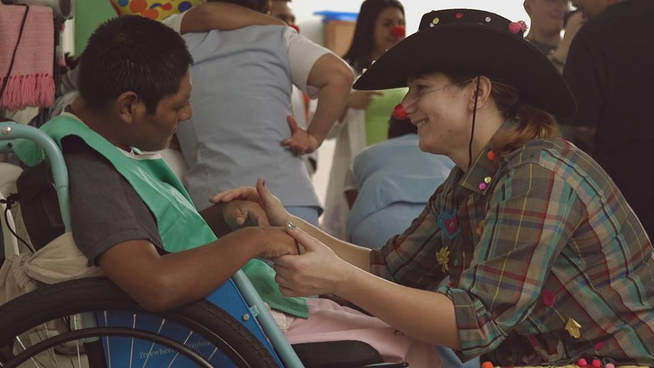
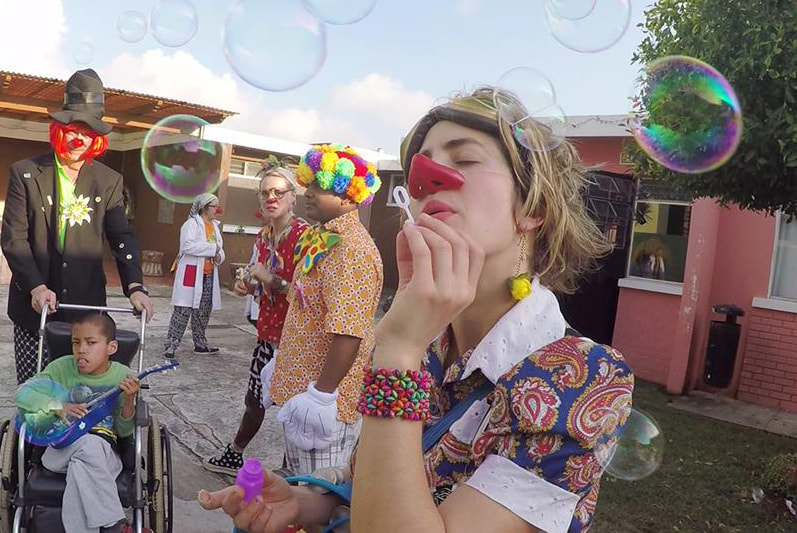
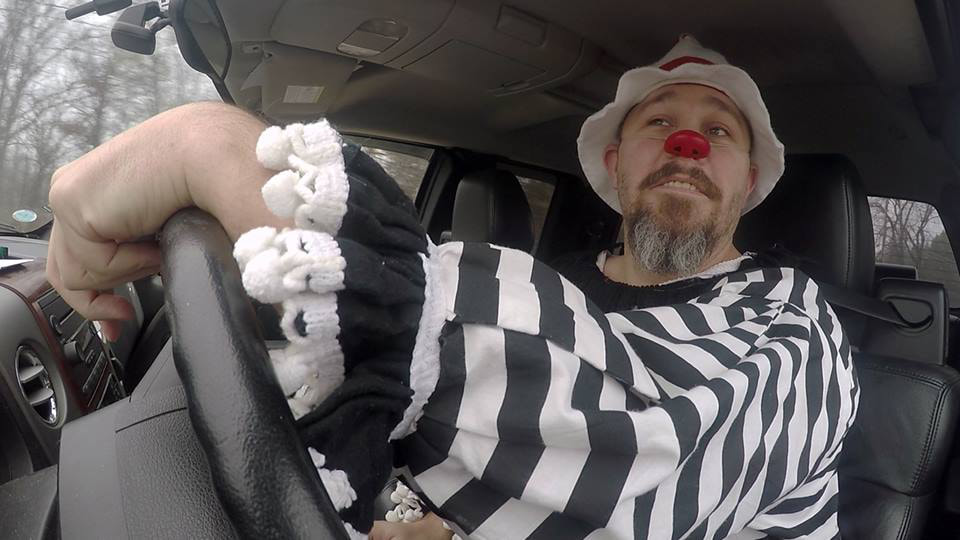







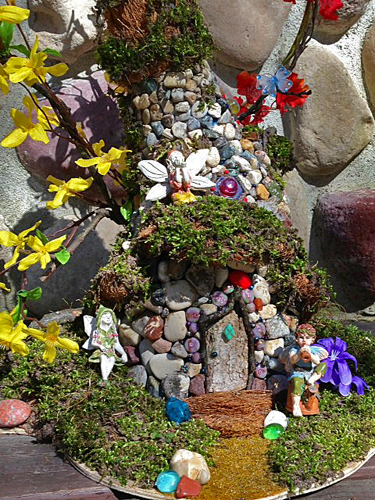
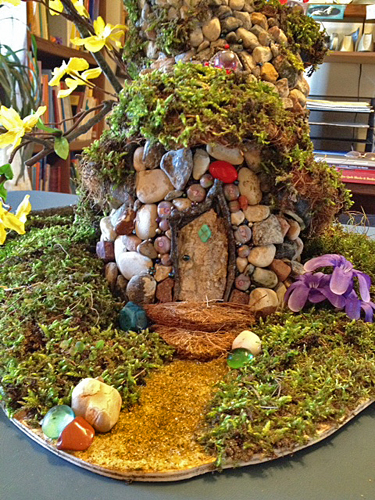
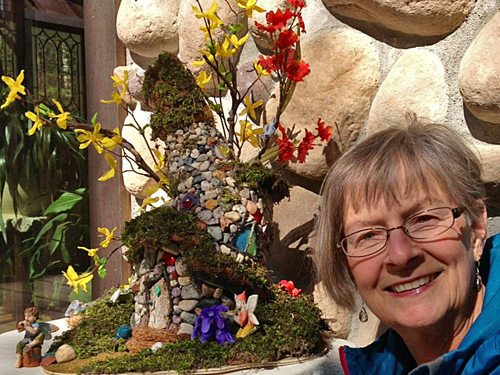
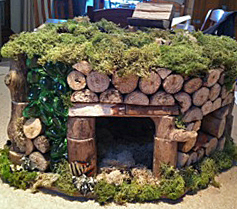
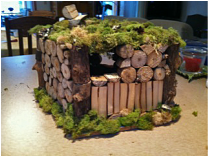
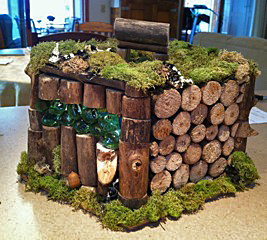
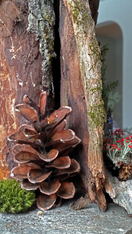
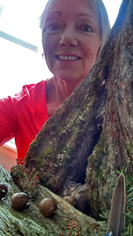
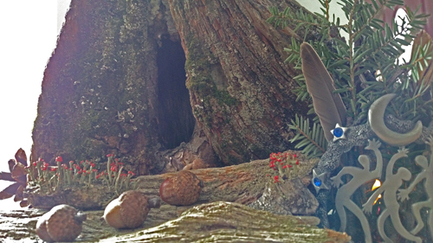
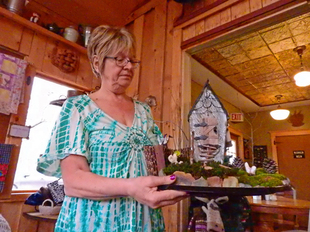
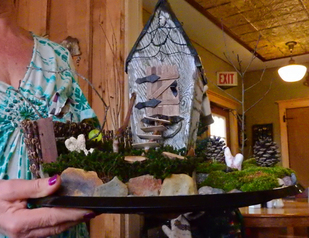
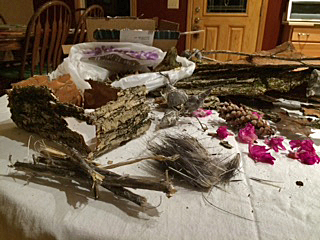
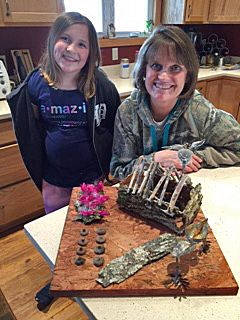
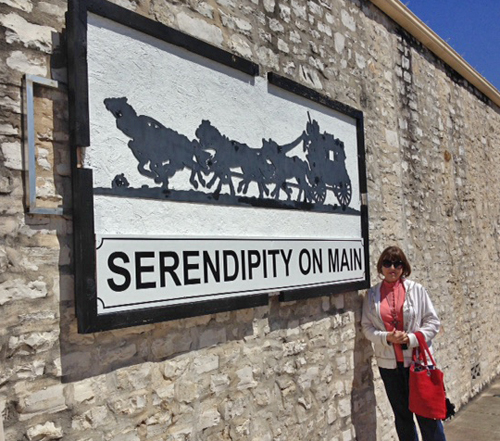

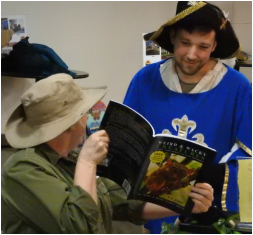
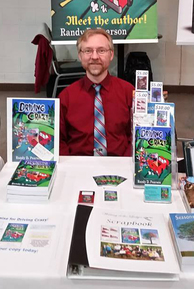
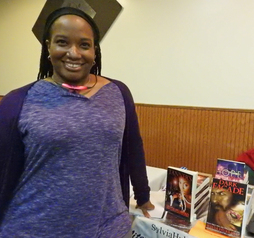

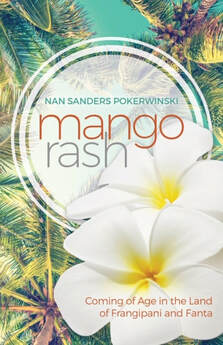
 RSS Feed
RSS Feed